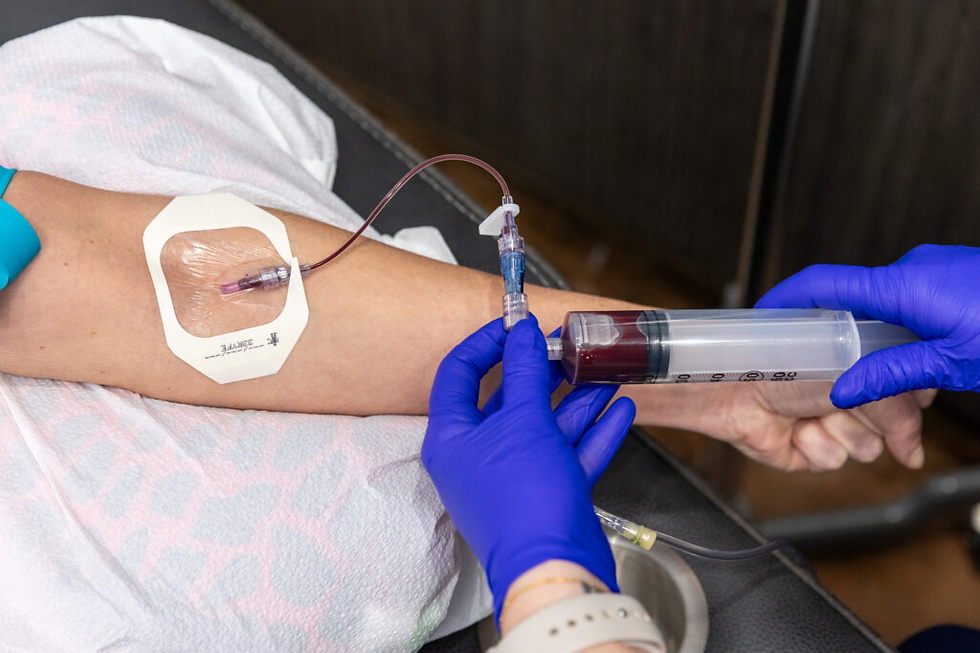Is Laser Hair Removal Permanent?
- dynaichealth69
- Jun 19
- 5 min read
Unwanted hair is a concern many individuals face, and with technological advancements in aesthetic medicine, Laser Hair Removal has emerged as one of the most effective treatments to achieve long-term smooth skin. This non-invasive treatment uses focused laser light energy to target and destroy hair follicles, reducing hair growth over time. While many wonder whether the results are truly permanent, the reality is more nuanced and largely depends on professional technique, laser technology used, and individual hair growth patterns. If you're considering Laser Hair Removal in Dubai, understanding the process and expected outcomes through a professional perspective is essential.
Understanding the Laser Hair Removal Process
Laser Hair Removal works by emitting a concentrated beam of light absorbed by the melanin (pigment) in the hair. This light energy converts into heat, which damages the hair follicles located beneath the skin's surface, impeding their ability to grow hair.
During a professional treatment, dermatologists use FDA-approved medical-grade lasers, such as Alexandrite, Diode, or Nd:YAG, depending on the patient's skin type and hair texture. These lasers are calibrated precisely to ensure deep follicular targeting while maintaining skin safety.
Each session typically targets hair in the active growth phase (anagen), as this is when follicles are most susceptible to laser energy. Since not all hair is in this phase simultaneously, multiple sessions are necessary to achieve comprehensive results.

Is Laser Hair Removal Permanent? The Truth
Laser Hair Removal offers long-lasting reduction, but it is not always classified as 100% permanent. Professional treatments administered by certified dermatologists significantly reduce hair density, coarseness, and regrowth rates. Most patients experience a dramatic decrease in hair growth after completing the recommended series of sessions—typically six to eight spaced several weeks apart.
However, due to hormonal changes, genetic factors, or underlying conditions, some hair may eventually regrow, though often finer and lighter. This is why the term “permanent hair reduction” is medically preferred rather than “permanent hair removal.”
Maintenance sessions once or twice a year, depending on the individual’s response, help sustain optimal smoothness.
Why a Doctor’s Expertise Matters
The success and safety of Laser Hair Removal depend heavily on the expertise of the medical professional performing it. In a clinical setting, board-certified dermatologists assess each patient's skin tone, hair density, and medical history before initiating the procedure.
Here’s what professional treatment typically involves:
Consultation & Evaluation: The doctor examines the target areas, reviews health history, and explains expected outcomes.
Customized Laser Selection: Based on Fitzpatrick skin typing and hair characteristics, the doctor selects the optimal laser type and settings.
Test Patch: A small area is treated to observe the skin’s reaction, ensuring safety and effectiveness before full-scale treatment.
Precision Treatment: The laser is applied methodically across the treatment area, covering every follicle zone with uniform energy.
Aftercare Planning: Patients receive detailed guidance on sun protection, skincare, and session intervals to maximize results.
This professional-level planning and customization are what elevate the results beyond over-the-counter or at-home devices, which lack the power and precision of medical-grade lasers.
Areas Commonly Treated by Doctors
Laser Hair Removal is suitable for almost every part of the body. In a medical aesthetic clinic, doctors commonly treat the following areas:
Face (upper lip, chin, sideburns)
Underarms
Bikini line
Legs
Arms
Chest and back
Each of these areas requires different energy settings, wavelengths, and cooling technologies to minimize discomfort and optimize results, making professional handling crucial.
Treatment Timeline: How Many Sessions Are Needed?
Hair grows in cycles: anagen (growth), catagen (transitional), and telogen (resting). Laser Hair Removal is effective primarily during the anagen phase. Since only a percentage of hairs are in this phase during a single session, a complete treatment plan is structured as follows:
Initial Series: 6–8 sessions spaced 4–6 weeks apart
Maintenance: Once every 6–12 months post-treatment (depending on hair regrowth)
The number of sessions varies based on:
Hair color and thickness
Skin tone
Hormonal influences
Area being treated
Professionals track each session’s results and adjust the treatment plan accordingly.
Results You Can Expect from Professional Laser Hair Removal
After completing the full treatment course with a qualified doctor, patients typically experience:
80–95% reduction in hair growth
Softer, finer regrowth if any
Even skin tone and smoother texture
No ingrown hairs or razor bumps
Long-lasting confidence with minimal maintenance
These outcomes make it an ideal solution for individuals seeking freedom from constant shaving, waxing, or threading.
Advanced Technology for Enhanced Outcomes
Doctors in leading medical clinics use cutting-edge laser devices that ensure both safety and effectiveness. Key features of such systems include:
Dynamic Cooling Devices (DCD): Protects skin while delivering energy
Pulse Duration Control: Allows customization for different hair depths
Variable Spot Sizes: Covers larger or smaller areas efficiently
Dual Wavelength Systems: Treat all skin tones effectively
These technologies ensure precise delivery of laser energy while minimizing discomfort or complications. Only trained physicians should operate such machines to ensure optimal settings for your skin and hair type.
Who Is an Ideal Candidate?
Laser Hair Removal is effective for individuals with light to medium skin tones and dark hair, as the laser targets melanin. However, with technological advancements like Nd:YAG lasers, even those with deeper skin tones can achieve excellent results under expert supervision.
Doctors assess your candidacy based on:
Skin tone and sensitivity
Hair color and density
Area of concern
Any history of pigmentation disorders
They may advise caution or alternative treatments in rare cases involving light blonde, grey, or red hair, which contains less melanin.
Benefits of Laser Hair Removal from a Doctor's Office
Choosing a certified professional for Laser Hair Removal delivers several benefits:
Medical-grade Precision: Accurate targeting without harming surrounding skin
Customized Treatment Plans: Tailored to your skin and hair type
Safety Protocols: Strict hygiene and medical supervision
Consistent Results: Visible reduction in hair after each session
Time Efficiency: Faster treatment of large areas
Permanent Reduction: Lasting freedom from daily hair removal routines
Moreover, doctors monitor for any adverse reactions and adjust the treatment accordingly, ensuring not just aesthetic success but medical safety as well.
Post-Treatment Care by Experts
After each session, doctors provide essential aftercare instructions, which often include:
Avoiding sun exposure for a few days
Refraining from hot showers or saunas immediately after treatment
Applying recommended skin-soothing products
This expert guidance is critical in preventing any complications and ensuring the skin heals effectively between sessions.
Conclusion:
In summary, while Laser Hair Removal may not guarantee absolute permanence, it delivers a high level of permanent hair reduction when performed by skilled medical professionals. With proper planning, advanced technology, and tailored sessions, patients enjoy smooth, hair-free skin for years—with minimal upkeep.






Comments